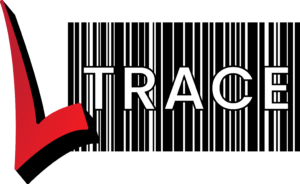Your Process
+ LTrace
It is our goal at Ltrace to offer you the best practice solution through our standard software however is not uncommon for installations to have unique or custom requirements, such as:
- Management reporting.
- Finance reporting and interfaces.
- Equipment interfaces.
- Patient management system interfaces.
- Workflow needs.
LTrace can be customized to meet your specific needs and help save your staff time, money, effort, and stress. We aim to provide you with a simple and cost-effective solution that caters to the unique requirements of your facility.
Decontamination
LTrace provides you with essential functions for item decontamination, including Decontaminated-only Items and Sterilized Items.
Decontaminated only items
When you load or receive a decontamination load you can specify the number of decontaminated-only items. You can then choose to print labels for each of these items which is especially useful when your items will later be bagged. Once labelled, you can track the location of each item and link it to a patient when it’s used.
This will also simplify your invoicing process by providing you with information on how many items are being sterilized for a patient and who will be using each item.
Sterilised items
You can trace any potential cross-contamination by tracking the decontamination load an item is processed in and if needed you can immediately recall that entire load to stop further infection. When you return items to the system after use by:
- Scanning the item's unique identifier (e.g., barcode).
- Using the item's sterilization label for scanning.
- Selecting from a list of recently used items.
You can mark it as “Returned to CSSD” or add it to a decontamination batch for further processing.
Sterilisation
LTrace helps you ensure that:
- The correct instrument is being sterilised.
- All instruments are present on a tray or bowl.
- It is correctly laid out.
- Any additional instructions are followed.
Furthermore, if you later discover there was a problem with a sterilised item it is possible to determine:
- Who prepared the item for sterilisation?
- What other items were sterilised in the same load/batch?
- Who accepted the load/batch after sterilisation?
You can then recall items or entire batches if necessary.
Process – Packing
your process when packing an item is simplified with LTrace. Once you have scanned the item, you will receive:
- A photo of the item.
- Instructions on what to do.
- An inventory of all instruments and quantities.
- Access to photos of each instrument within the tray.
After packing the item, you can create a label, a count sheet and any additional sticker required to show missing items in a tray.
Process – Sterilising
The goal of our system is to establish a clear link between every one of your items and the load or batch in which it is sterilized. You can do this by:
- Automatic Assignment: Automatically assign your items to the next available load when printing the label. This process requires no additional intervention from you or your staff.
- Barcode Scanning: Link items to a specific load by scanning a barcode on the trolley and then scanning the individual items on that trolley.
- Manual Selection: Manually select the items in the software and add them to your trolley, specifying the load or batch they belong to.
Once your trollies have been sterilized, they undergo inspection in LTrace. This inspection process typically takes less than a minute, and the trolley is either marked as passed or failed.
Item Tracking
The most common method for tracking items throughout your facility is by using barcode scanners. A barcode is conveniently located on the tray. Once you scan it and all the other items as they are received, the label can be used to display information such as:
- Department Information: This information identifies the department that uses or requires the item, ensuring efficient and swift delivery to its intended destination.
- Location within the Department: You can include specific details like cupboard numbers on the label to ensure the item is stored in the correct location within the department, reducing the risk of misplacement once it has reached its destination.
Item Usage
At the start of surgery, a blank sheet of paper has a patient label affixed to the top. As items are used, you simply remove the attached label and stick it onto the patient sheet getting rid of the need for any PC during surgery. In an emergency, when you are quickly opening items, the label will remain with the packaging until after surgery.
After surgery, you enter the patient code into LTrace and scan the labels on the patient sheet. This usually takes less than a minute and once the item has been scanned to the patient, your audit trail is nearly complete. you can track the item from the patient back to the batch, back to previous patients, or forward to the next patient.
